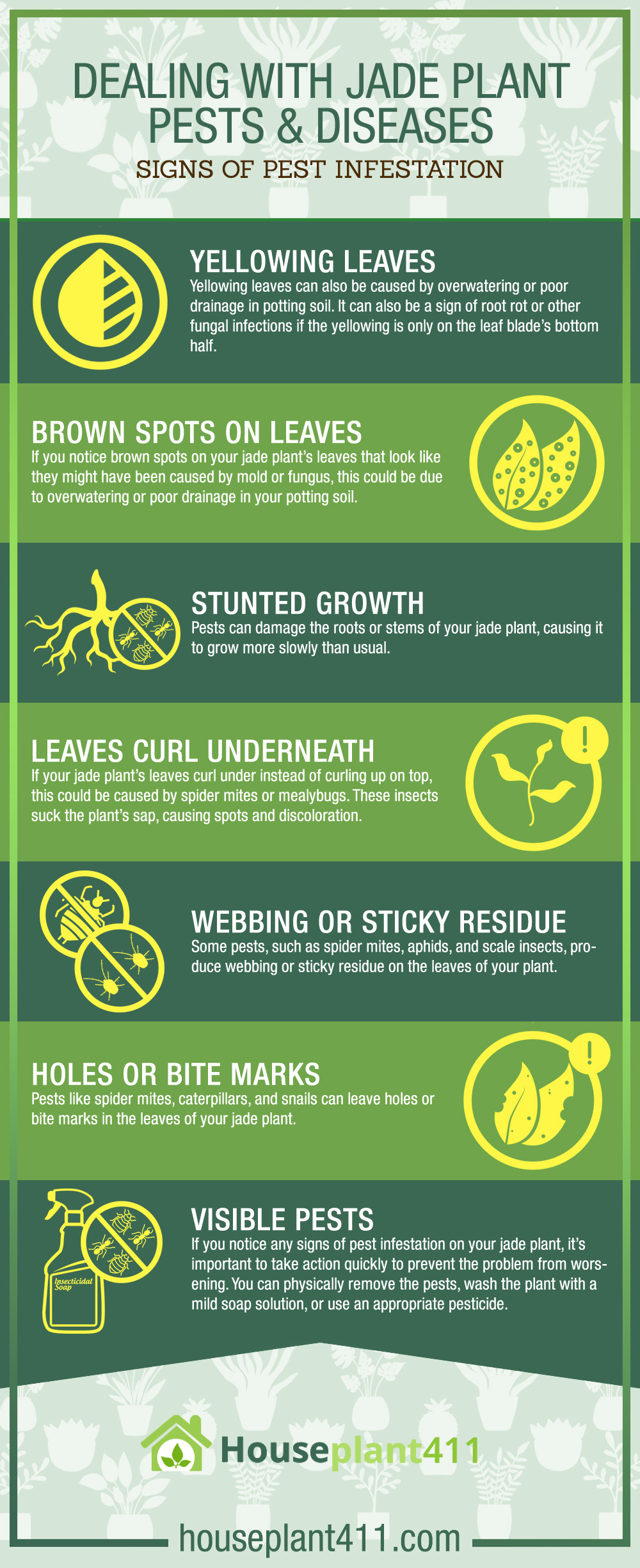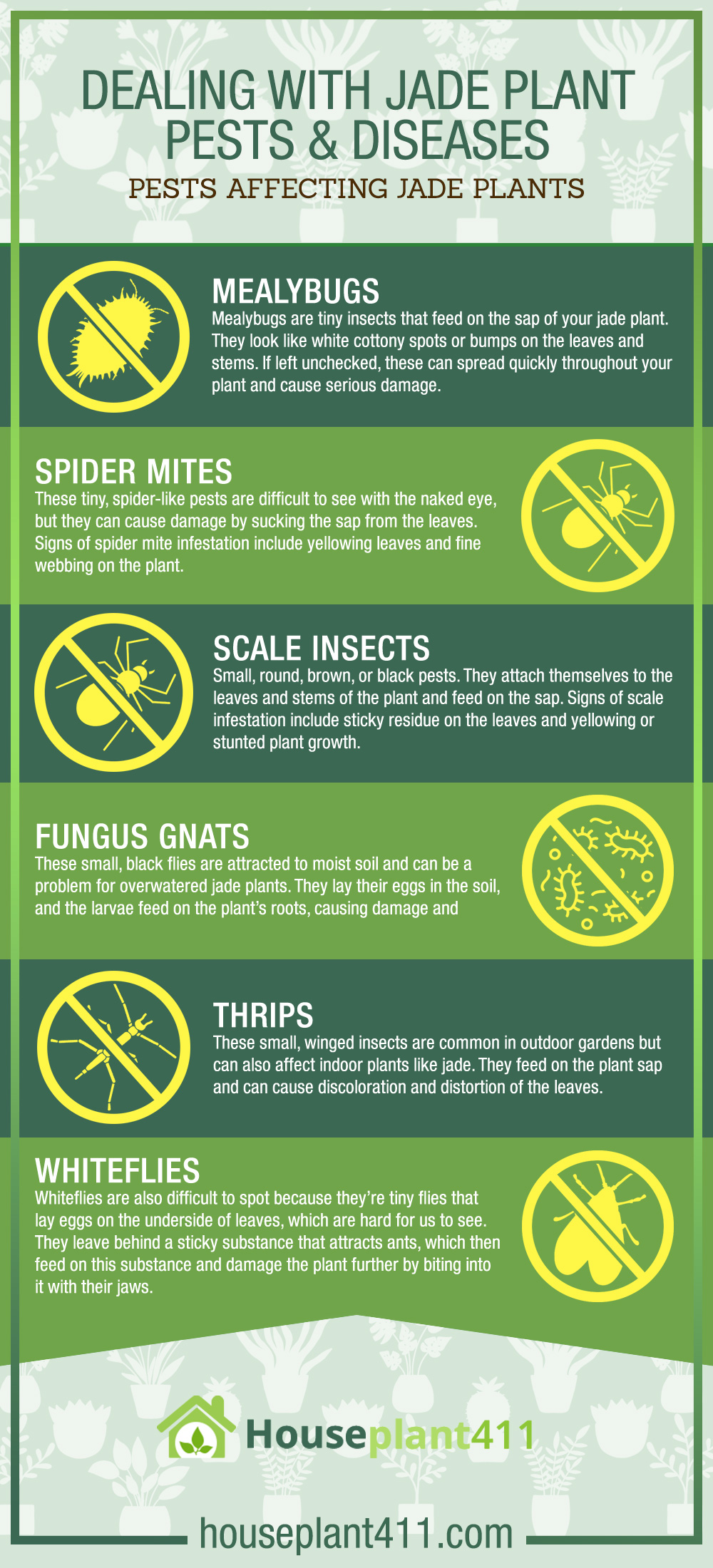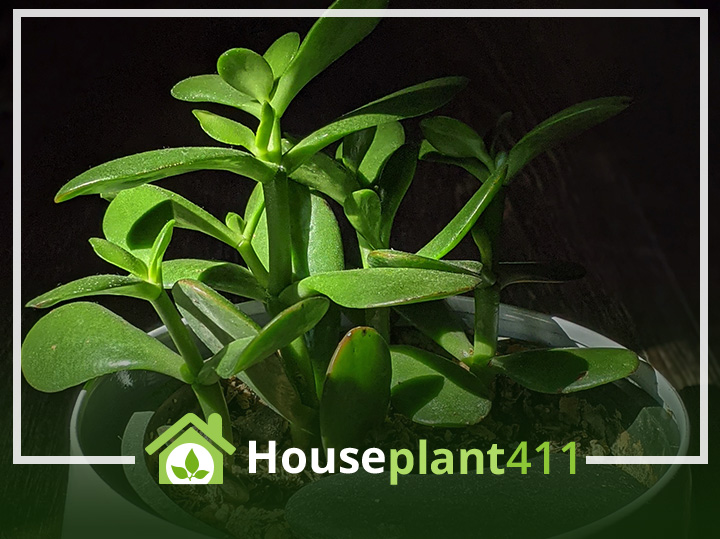Jade plants are one of the most popular and beautiful indoor houseplants. They’re also very easy to care for, making them a great choice for people new to gardening or those with limited time and space. So it’s no surprise that jade plants have earned themselves a spot in many homes worldwide. But even though they’re so easy to grow, jade plants get sick from pests (and sometimes diseases) just like any other plant. Here we’ll look at some common jade plant pests and how best to deal with them—plus what you can do to prevent them!
Signs of Pest Infestation
If you suspect pests have infested your jade plant, several signs can help you identify the problem:
Yellowing Leaves:
Yellowing leaves can also be caused by overwatering or poor drainage in potting soil. It can also be a sign of root rot or other fungal infections if the yellowing is only on the leaf blade’s bottom half.
Brown Spots on Leaves:
If you notice brown spots on your jade plant’s leaves that look like they might have been caused by mold or fungus, this could be due to overwatering or poor drainage in your potting soil.
Stunted growth:
Pests can damage the roots or stems of your jade plant, causing it to grow more slowly than usual.
Leaves curl Underneath:
If your jade plant’s leaves curl under instead of curling up on top, this could be caused by spider mites or mealybugs. These insects suck the plant’s sap, causing spots and discoloration.
Webbing or sticky residue:
Some pests, such as spider mites, aphids, and scale insects, produce webbing or sticky residue on the leaves of your plant.
Holes or bite marks:
Pests like spider mites, caterpillars, and snails can leave holes or bite marks in the leaves of your jade plant.
Visible pests:
Some pests, like mealybugs and scale insects, are visible to the naked eye. Look for small, white, or brown spots on the leaves and stems of your plant.
If you notice any signs of pest infestation on your jade plant, it’s important to take action quickly to prevent the problem from worsening. You can physically remove the pests, wash the plant with a mild soap solution, or use an appropriate pesticide. Regular inspection and care of your plant can help prevent pest infestations from occurring in the first place.

Pests Affecting Jade Plants
Jade plants are a great choice for many homes. They’re easy to care for, don’t need much light, and are more resistant to cold than other plants. But jade plants can still be affected by pests—and you must know how to identify them and what to do if you see any signs of trouble. Here’s what you need to know about pests affecting jade plants:
Mealybugs:
Mealybugs are tiny insects that feed on the sap of your jade plant. They look like white cottony spots or bumps on the leaves and stems. If left unchecked, these can spread quickly throughout your plant and cause serious damage. To get rid of mealybugs, use an insecticide containing neem oil to kill the bugs and their eggs so they don’t spread any further.
Spider mites:
These tiny, spider-like pests are difficult to see with the naked eye, but they can cause damage by sucking the sap from the leaves. Signs of spider mite infestation include yellowing leaves and fine webbing on the plant.
Scale insects:
Small, round, brown, or black pests. They attach themselves to the leaves and stems of the plant and feed on the sap. Signs of scale infestation include sticky residue on the leaves and yellowing or stunted plant growth.
Fungus gnats:
These small, black flies are attracted to moist soil and can be a problem for overwatered jade plants. They lay their eggs in the soil, and the larvae feed on the plant’s roots, causing damage and stunted growth.
Thrips:
These small, winged insects are common in outdoor gardens but can also affect indoor plants like jade. They feed on the plant sap and can cause discoloration and distortion of the leaves.
Whiteflies:
Whiteflies are also difficult to spot because they’re tiny flies that lay eggs on the underside of leaves, which are hard for us to see. They leave behind a sticky substance that attracts ants, which then feed on this substance and damage the plant further by biting into it with their jaws.
If you notice signs of pest infestation on your jade plant, it’s important to take action quickly to prevent the problem from worsening. This can include physically removing the pests, washing the plant with a mild soap solution, or using an appropriate pesticide.

Jade Plant Diseases [With Prevention Tips]
Jade plants are generally hardy and resistant to diseases but can be susceptible to a few common issues. Here are some diseases that can affect jade plants:
Root Rot:
Overwatering can lead to root rot, which is caused by fungi in the soil. Symptoms include yellowing leaves, wilting, and a soft, mushy stem. To prevent root rot, ensure your plant is in well-draining soil and water it only when the top inch of soil is dry.
Leaf Spot:
Leaf spot is caused by bacteria or fungi and appears as dark spots on the leaves. The affected leaves may turn yellow or brown and drop off. To prevent leaf spots, avoid getting water on the leaves when you water your plant and provide good air circulation around the plant.
Powdery Mildew:
Powdery mildew is a fungal disease that appears as a white or gray powder on the leaves. It can cause stunted growth and distorted leaves. To prevent powdery mildew, avoid getting water on the leaves and provide good air circulation around the plant.
Stem and Root Rot:
Stem and root rot is caused by a fungal infection and can cause the stem to become soft and mushy. It is often caused by overwatering or poor drainage. To prevent stem and root rot, ensure your plant is in well-draining soil and water it only when the top inch of soil is dry.
Virus:
Viruses can cause yellowing or mottling of the leaves and stunted growth. Unfortunately, there is no cure for viral infections, and infected plants should be removed to prevent the spread of the virus to other plants.
By monitoring your jade plant regularly and taking action promptly if you notice any signs of disease, you can help keep it healthy and thriving.!
Conclusion
Jade plants are beautiful and can be kept healthy with regular care and attention. If you have questions about your jade plant or the signs of pests or disease, please contact your local garden center for more information on how to best care for this plant.

